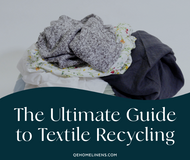The Ultimate Guide to Textile Recycling
2023 Jun 5th
Welcome, eco-warriors and conscious consumers, to the ultimate textile recycling guide! If you're anything like us, you're tired of throwing away perfectly good linens and fabrics only to see them end up in landfills. Not only is it a waste of resources — it's also incredibly harmful to the environment.
Well, fear not! Read on to learn how textile recycling works, why it's so important, and what you can do to start giving old fabrics new life. From upcycling, downcycling, and waste to energy, textile take-back programs and more, we've got all the facts you need to reduce textile waste and make a positive impact on the planet.
So grab a cup of tea, get cozy, and let's dive into the world of textile recycling together!
The state of textile pollution & waste in 2023
The current state of the textile industry is a bit of a mixed bag. On one hand, it provides jobs and supplies us with everything from clothing to bedding. On the other, it generates an alarming amount of waste.
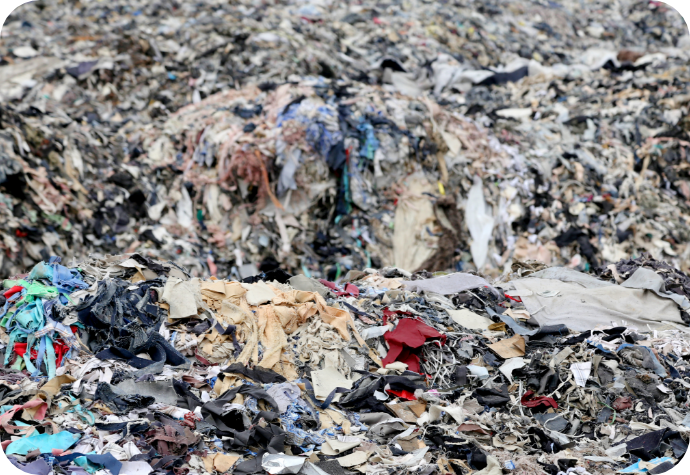
In Canada, 500 million (yes, million) kilograms of textiles are thrown out annually, clogging up landfills for centuries with tonnes of perfectly usable materials. Not only that, but the environmental impact of textile production is significant — with water pollution, greenhouse gas emissions, and chemical runoff from production all playing a role.
The good news is, we're starting to see a shift towards more sustainable, ethical practices, and companies like QE Home have committed to reducing waste and producing responsibly (read our sustainability initiative here). One way to go about that? Recycling!
The many benefits of textile recycling
As we’ve already hinted at, textile recycling is vital for so many reasons — not just for the environment, but for humanity in general.
Textile recycling helps by…
- Reducing landfill waste: textiles account for 7% of all landfill waste in Canada; it can take from 80 – 1000 years for these garments to break down, and this space is finite.
- Conserving resources and energy: textile recycling requires significantly less energy and resources compared to virgin material production.
- Lowering greenhouse gas emissions: recycling 1 tonne of textiles can reduce 10 tonnes of CO2 emissions,
- Reducing water usage: the textile industry is one of the largest water-consuming industries globally; recycling cotton can save up to 20,000 litres of water per kilogram
- Minimizing pollution: recycling textiles prevents microplastic pollution and harmful chemical runoff.
- Creating jobs: increasing textile recycling in Canada could create thousands of green jobs and generate millions in economic activity.
So, how does it work?
Textile recycling methods: upcycling, downcycling & waste to energy
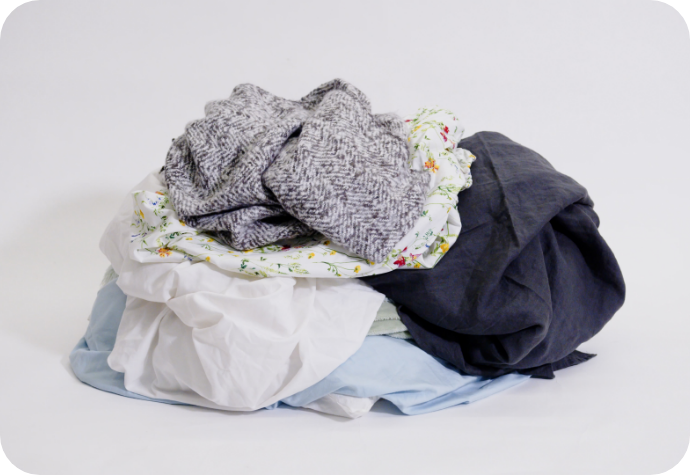
Textile recycling is a fascinating process that involves collecting old materials, processing them, and turning them anew. This is an essential step towards a more sustainable future, reducing waste, and conserving resources (more on that below).
Collection is a vital first step, with many companies having collection bins placed around for people to drop off unwanted fabrics. Others like QE Home have convenient textile take-back programs that empower consumers to send old items in for free to be recycled in exchange for credits.
These collected materials are then sorted to determine the best method for processing the textiles via upcycling, downcycling, or converting waste-to-energy.
Upcycling Textiles (fiber to fiber upcycling)
Fiber to fiber upcycling takes discarded textiles and transforms them into new yarn used to create new products. Best part? The quality is often higher, thanks to modern technology and techniques.
Think of it as Marie Kondo's method of decluttering, but on a larger scale: taking what doesn't spark joy and turning it into something that will. It’s sustainable, innovative and fashionable all at the same time.
Downcycling Textiles
While upcycling is more desirable, downcycling is also an option. Downcycling is the process of shredding and converting unwanted textiles into various mixed-used items, such as insulation, padding for sports equipment or cleaning rags.
This is the preferred method when dealing with old materials that cannot be used again in their original form — for example, if they’re too worn or damaged. It still reduces waste by giving textiles new life rather than sending them to the landfill.
Waste-to-Energy
When neither upcycling nor downcycling are possible, there’s always Waste-to-Energy.
Waste-to-Energy takes non-hazardous waste otherwise destined for landfills and incinerates it, in order to generate power electricity or heat. The leftover ash is also processed to help recover metal for recycling, and all remaining gasses are collected, filtered and cleaned to minimize environmental impact.
Wondering about the emissions involved? Both the European Union and U.S. EPA waste management report that waste-to-energy is a significantly greener alternative to landfills.
So what can you do to get involved?
Help the planet by recycling textiles
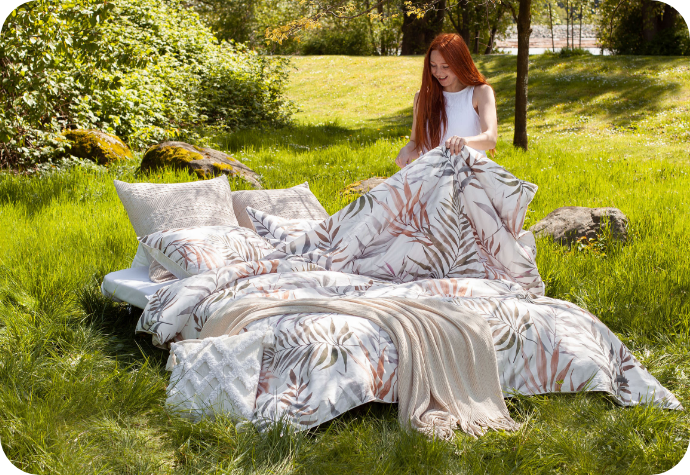
It’s no surprise consumer behaviour can make a world of difference. Every choice we make has an impact on our environment, and by choosing responsible practices and products, we can reduce our environmental footprint and create a greener future.
One way consumers can make a difference is by choosing sustainable and recycled materials. At QE Home, we offer a variety of eco-friendly options you can feel good about, from organic cotton, rayon from bamboo, and recycled polyester, to closed-loop materials like TENCEL™ and Carbon Neutral duvets and sheeting.
And of course, it’s never been more vital to participate in textile recycling and take back programs. With tons and tonnes of textiles taking up precious landfill space every year, these programs are essential to reduce this waste.
That’s why QE Home has launched ReHome — the easiest and most sustainable way to keep old bedding out of landfills, give linens a second chance at life, and get rewarded for your good deeds.
Take action: How to recycle textiles the easy way
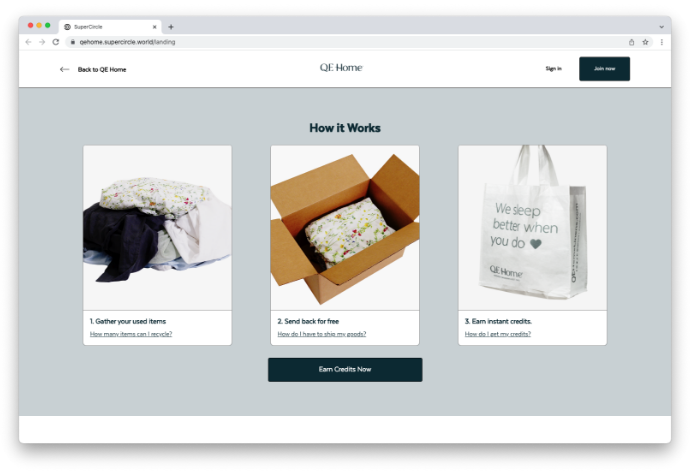
Powered by SuperCircle, ReHome is our textile recycling and take-back program that empowers you to recycle your unwanted bed threads and reap benefits. Simply send your unwanted QE Home items back to us for recycling, and you’ll receive credits you can use towards your next purchase.
That’s right — together we can repurpose old bed threads into new fabrics, eliminate excess waste and prioritize sustainable consumption. It’s super easy, good for the world and good for your wallet too.
Here’s how it works:
- Gather up your unwanted QE Home items (like-new, well-used — we’ll take it all). Then, initiate recycling via the online portal and package your laundered items in a box or mailing envelope.
- Once you’ve initiated the process via the link above, you can download the prepaid shipping label and send them back for free by dropping them off at your nearest Canada Post shipping location (or mailbox).
- Earn credits that you can use towards your next online purchase at QEHomeLinens.com as soon as your return has been scanned.
- Rest easy — you’ve put excess waste to rest!
Still have questions? Visit ReHome to learn more and start recycling your old bedding today.
Reduce waste & save money with sustainable textile recycling programs
As we’ve learned textile recycling is essential to a more sustainable future. By diverting fabric away from landfills, we can reduce waste, conserve resources, and promote sustainable practices industry-wide. Plus, take-back programs make it easy for everyone to participate in this movement, and our new initiative is a convenient way to recycle old bedding while being rewarded.
So, if you're ready to get rid of old bedding the eco-friendly way, get started with ReHome today. Not only will you be doing your part to protect the planet — you’ll also save money on your next dreamy purchase (like, say, some eco-friendly bedding!)
